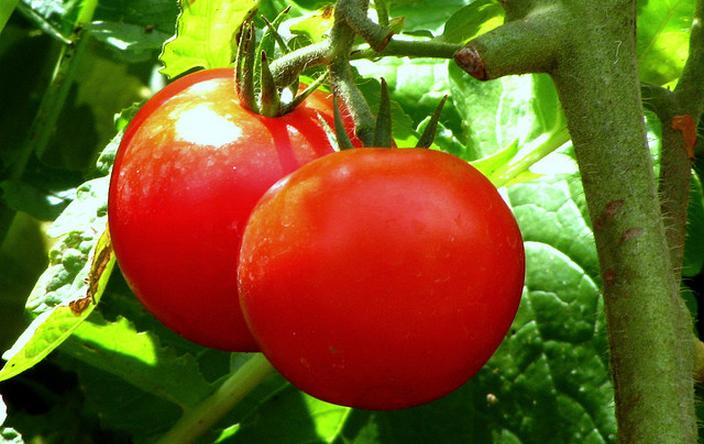Toe-MAY-toe or toe-MAH-toe. No matter how you pronounce it, tomatoes are a versatile vegetable, or fruit as the case may be. Scientifically, the tomato is a fruit, but when it comes to culinary use, the savory tomato is clearly a vegetable.
The tomato is just as good raw as it is cooked. Use them in homemade pasta sauces, soups, and salads. By growing your own tomatoes, you save money on groceries and control the amount of chemicals used during the growing season. It’s easy growing tomatoes in pots; here’s what you need to know:
Determinate vs. Indeterminate TomatoesThere are thousands of varieties of tomatoes, but they are placed in two categories: determinate or indeterminate. Determinate tomatoes are also known as bush tomatoes. They do not get very tall and fruit ripen shortly before the plant dies. These are the best tomatoes for containers.
Indeterminate tomato plants, typically heirloom varieties, average six feet in height. The plants continuously flower and produce new tomatoes throughout the spring, summer, and even fall. Growing indeterminate tomatoes is possible in planters, but you must support the stalks with wire cages or stakes.
Look for planting pots in gardening supply stores, dollar stores, and hardware stores. Most planters fit one single plant, while planters like whiskey barrels will fit a few plants.
When deciding on the size of the planter, use this rule of thumb. Tomato varieties recommended for patio planting need two and a half gallons of potting soil per plant to develop a healthy root ball. Other varieties, such as heirlooms, require five gallons per plant.
Potting Soil Mixture for PotsMixes made specifically for planters are best, but you can also make your own. Gardener Supply has a simple recipe for homemade potting soil.
- Five gallons compost
- One gallon clean sand
- One gallon vermiculite
- One cup granular fertilizer
While the compost and fertilizer provide necessary nutrients, the sand helps with drainage. Vermiculite helps retain water. Mix these ingredients together in a bucket and cover to keep insects and seeds out.
Steps for Planting TomatoesIf you’re starting tomatoes from seeds, you need to plant the seeds about two or three months before the weather warms up. Peat pellets contain everything you need to grow tomato seeds. Simply soak them until they expand, plant the seeds, and keep them watered until the plants are about six inches tall. For easier planting, head to your local greenhouse and purchase the tomato seedlings from them.
Seedlings need to be hardened prior to transplanting. Bring them outside in the day and back inside at night for a couple of weeks. This helps them acclimate to the cooler outdoor temperatures. Once the danger of frost has passed, transplant them to the planters and leave them outside all day and night.
Fill your planter three-quarters of the way with potting soil. Dig a small hole and plant your tomato seedling. Cover the roots with more potting soil. Gently pat down the soil to ensure the plant is straight and supported by the soil.
Placing stakes or cages now ensures your plant has the support it needs in the future. Push the stake down next to the stalk, or put the cage over the seedling. If you are using stakes, use tomato clips to secure the tomato stalk to the stake.
Care for Tomato PlantsMake sure the soil is damp and not sopping wet. Too much water kills a plant. During long periods of rain, go out and drain water from the pot as often as possible. Otherwise, bring the plants into a garage or shed until the rain subsides.
Pruning increases their sugar production because the plant receives more sun. To prune tomatoes, start at the bottom of the stalk. As you work up, each side of the stalk has a branch of leaves. A sucker appears where the stalk and branch meet. Snap that sucker off.
Check the plants every few days for insect pests like the tomato hornworm. It’s unlikely that you will find any. If they are there, simply pull them off and drown them in soapy water.
Benefits to Container GardeningSimplicity is the biggest benefit. It’s rare that you’ll see a weed. Diseases that affect tomatoes are less prevalent when you use planter pots. You also have optimal control over watering.
In areas with a short growing season, growing tomatoes in planters is ideal. If the frost comes before your tomatoes are ready, you can bring the plants inside at night to prolong the growing season.










One Response
4